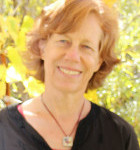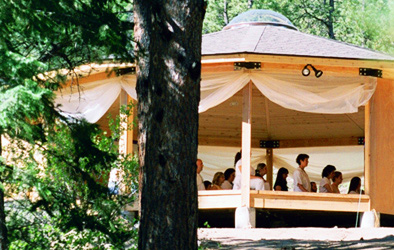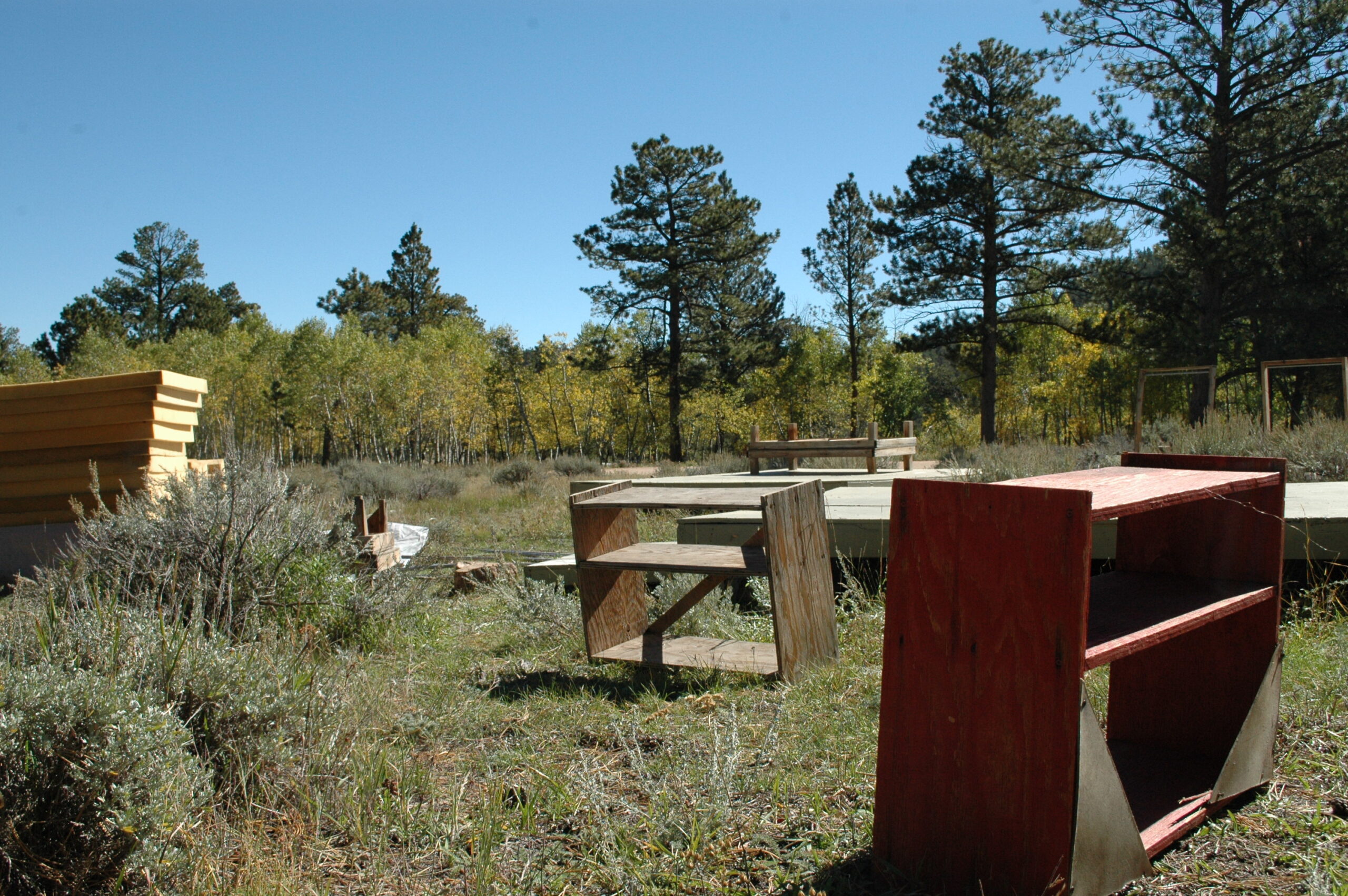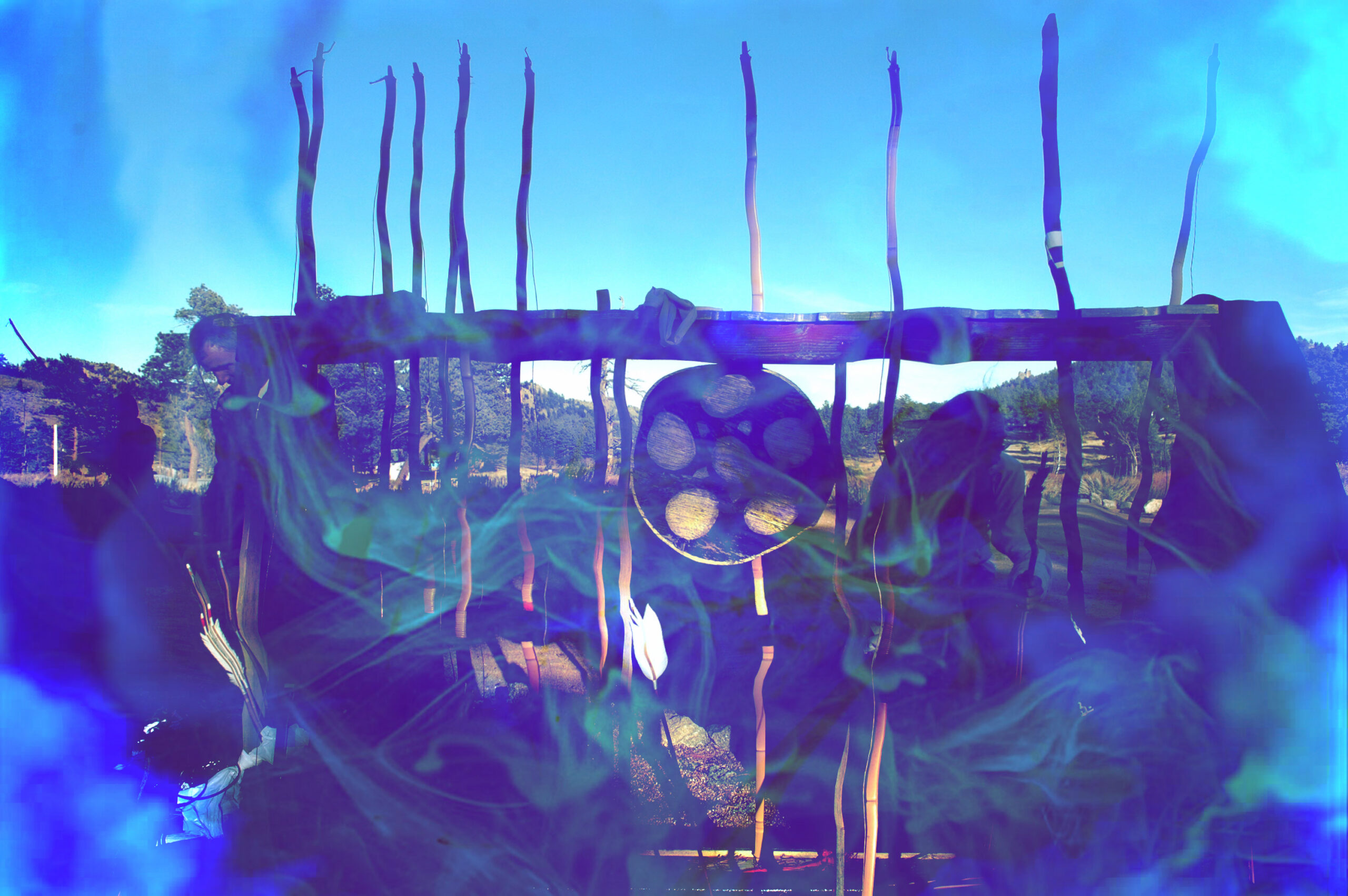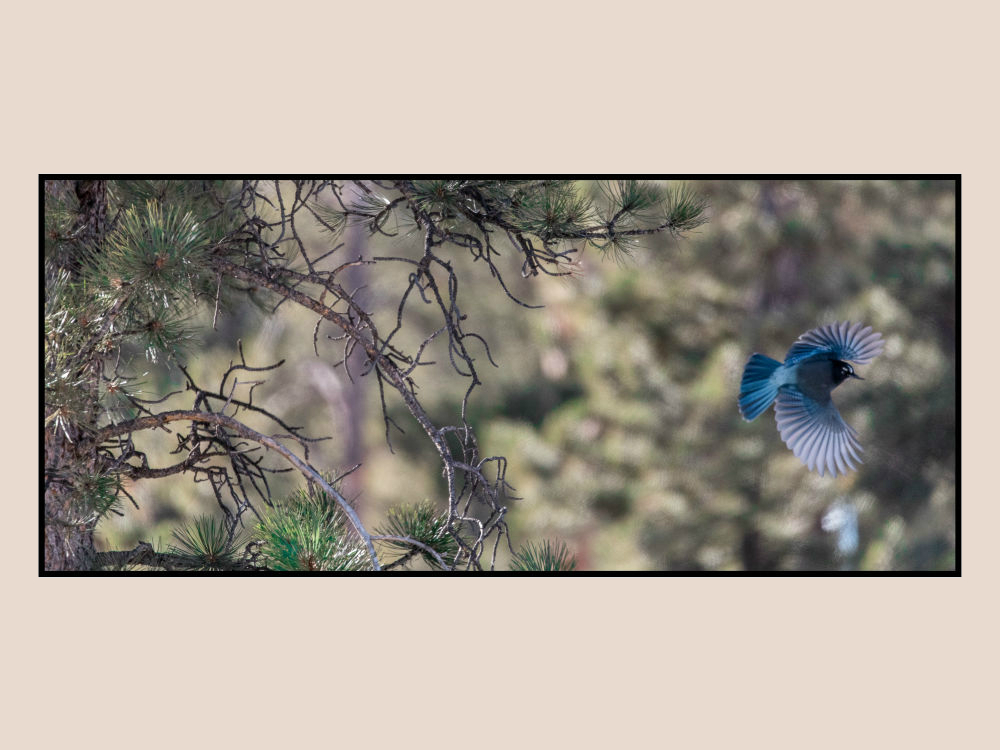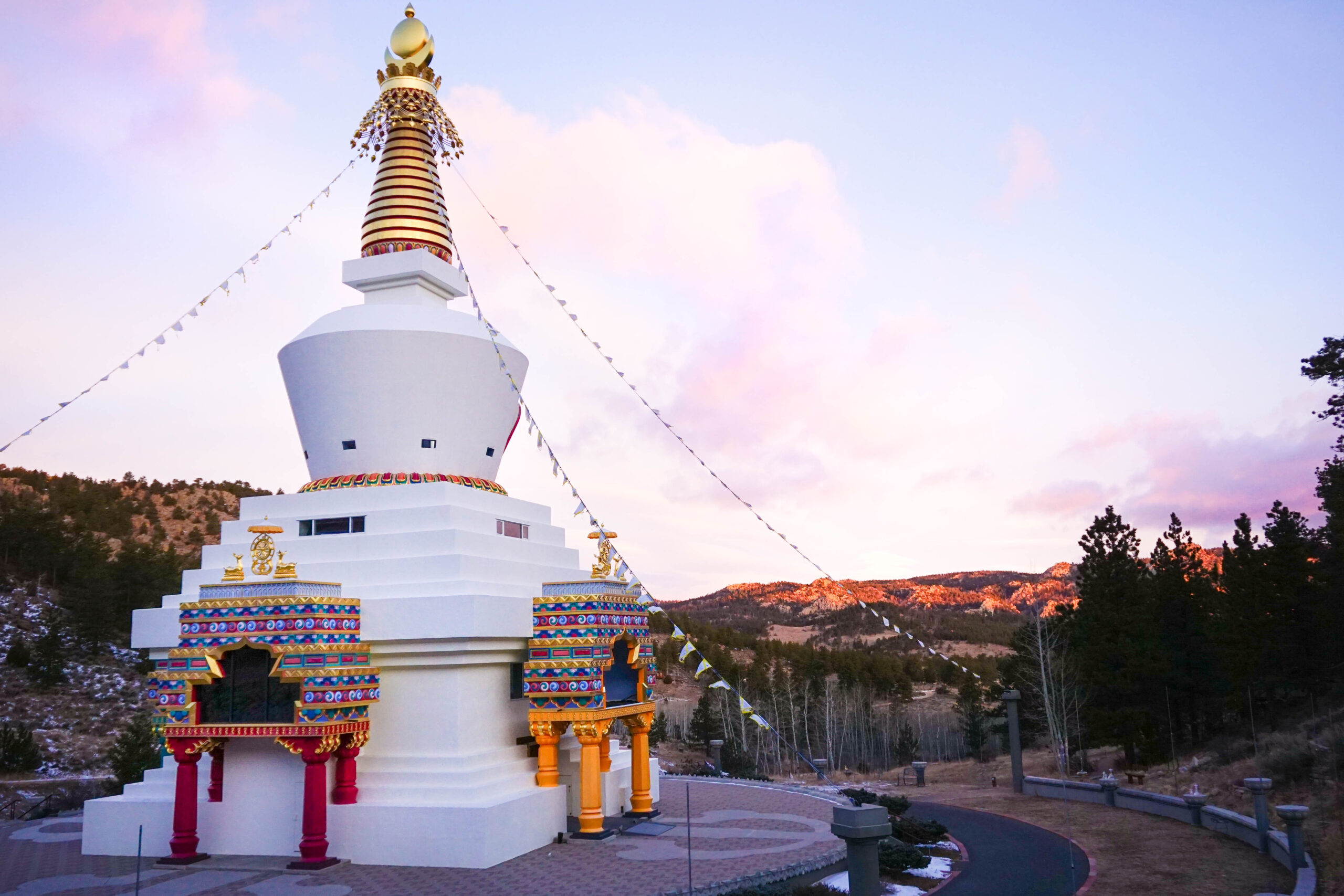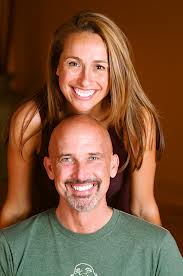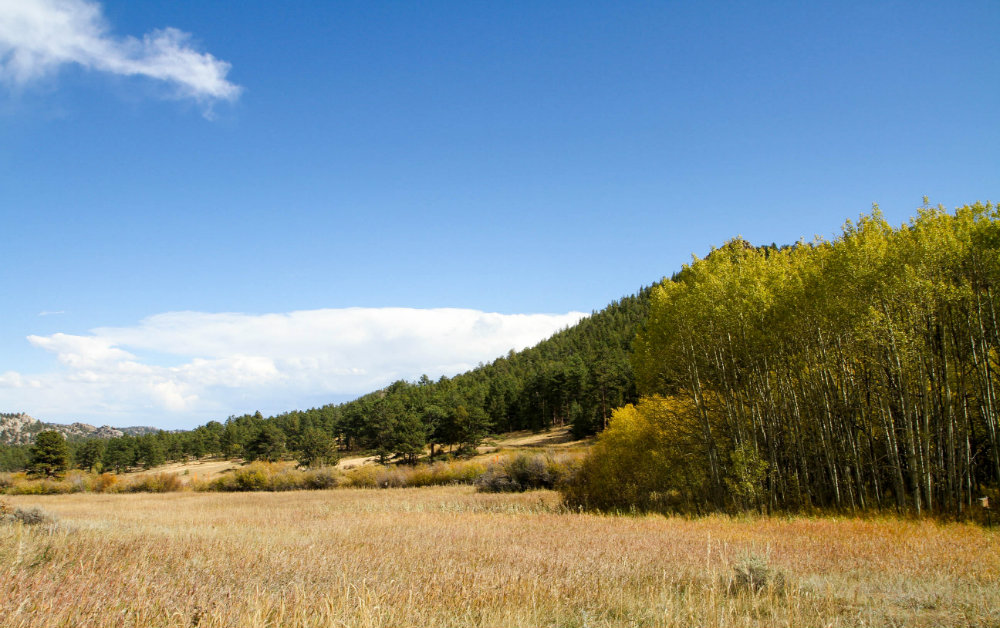Follow
By Katharine Kaufman //
Be soft in your practice. Think of the method as a fine silvery stream, not a raging waterfall. Follow the stream, have faith in its course. It will go it’s own way, meandering here, trickling there. It will find the grooves, the cracks, the crevices. Just follow it. Never let it out of your sight. It will take you.
~Sheng-yen
In January 1994 I was lay ordained in the Soto Zen lineage. On my way to Hokoji Zendo I gave Fran Lewis a ride. Fran is an early student of Chogyam Trungpa and best friend of Kobun Chino, Roshi. Fran was the first outwardly outrageous person I met on this Dharma path, long white hair in two thick braids, big glasses, layered and colorful clothes. She says what ever she wants, tells wild funny stories about the 60’s, and cuts through pretention like a Samurai. During the seven-hour drive I have a lot of questions about what I’m in for. “Don’t doubt your Guru!” Fran repeats. In Arroyo Secco Kobun serves us perfect mounds of rice in small bowls. We sit on cushions; tuck legs under cloth of kotatsu table, small furnace underneath.
~
Years later, going the long way, to Denver airport, Kobun thanked me for driving him. “It’s the least I could do, since you will take me through the bardo!”* I said. “Ha! That was like Frannie would say!” He said.
~
The night before ordination Edwina and I are up finishing stitching together my rakasu.** I drive the hill at midnight and give Kobun my rakasu, finally done. Kobun had to write in calligraphy my new name, and a quote on the white cotton back of the rakasu. He did this for all of us. “What have you been doing?!” Kobun said.
~
The Dharma name can be a lesson for the new student. It reflects what the person could deeply consider or practice with. Each time I slip rakasu out of envelope I see my new name. “Jun Po,” means, “Follow the Dharma.” Kobun said, “Really follow it. Only the Dharma.”
Oh no. I think, when Kobun says my new name. He sees through me, what I mess I am. I need to be more obedient, more focused, pay attention, really follow though (whatever that means)—cut through delusion and self- clinging. I wasn’t sure exactly what the work was. I had a long way to go doing whatever it was! I thought I should design a better me by practicing a lot and emulating my teachers.
~
In the 1990s I cleaned Sounds True on Sundays in Boulder. Taking a break, I wandered through stores looking for a thank you card for Kobun. You should be following the dharma! I thought. Today’s Dharma was to sweep, vacuum, clean toilets, empty trash. What are you doing?! I repeated Kobun’s words to myself.
I cut across gas station on my way back to Sounds True. I see someone about to get in a car, holding a gigantic bag of corn chips and a coke. Kobun. And next to Kobun, Fran. He’s in Boulder for a few hours. My drift lands me directly in front of my teacher; to the mouth of the Dharma. He places Fran and my hands on each other’s hearts, says, take care of each other. In his mind this auspicious meeting is about Fran and me. He would disappear.
~
My insights are similar and repetitive. The answer that comes is always more generous, tender, open, kind, unbelievable sweet and loving than I could fabricate with my dense curly cues of self- deprecation. Following the Dharma takes many forms. I am broken. And I do dive into the wreck (as Adrienne Rich says). **** The deeps of the work aren’t about being better at anything. I’m on a good track, lucky even. Rumi says, “There are a thousand ways to kneel down and kiss the ground.”***
~
Years later on a Friday at the end of an afternoon, at the end of July, I’m standing in line for the bathroom at the Yoga Workshop, talking with my friends before practice. I sense something’s off. I glance toward the door and there’s Lesley Bell walking toward me. Everything goes slow. Why is Lesley at the Yoga Workshop, carrying incense, dressed in her skirt and rakasu? She says, “Collect your things and follow.” In the doorway she told me about Kobun and Maya.
~
Fran buzzed us in, answering her door in her slip. We wrapped our arms around each other and wailed.
~
During the ordination ceremony Kobun speaks personally about each of us. The whole thing seems improvisational. Yoshiko sits seiza on stone floor. Kobun talks to Edwina, Jean, Bob, Goshi, and then calls Lesley up and speaks to her.
“I don’t know Katharine so well.” he says.
Did you know sleeves of the Koromo are huge pockets? Toward the end of ordination an actual kitten crawls out of Kobun’s sleeve. As he prepared the incense and circled the new O’Kesas in purifying smoke, as he talked and placed the robes around us, Kobun had been carrying this kitten.
I get it. This lineage is completely at the mercy to the actual moment. From the outside the practice looks strong, strict even. Maybe it needs that, to hold such a tender mew. On some level I realize there is no inside or outside. Here though, just outside of Taos, in mid-January 1994, the inner kitten staggers out of a large pocket onto the nearest thing she can land on, surprised and curious at a candle flame, firm leg, carpet, incense, loose thread.
~ o ~
*The Meaning of Bardo
The Tibetan word bardo literally means “between two.” Although it is popularly taken to refer to the after-death state, its principal meaning is the nowness in every moment of time, the continually moving point between past and future. Thus bardo occurs at every moment of time, and to understand it is to understand the development of consciousness. The key to its understanding is nowness.
From “The Bardo” in Selected Writings, page 554 in The Collected Works of Chögyam Trungpa, Volume Six.
This post was posted in Ocean of Dharma
**Rakasu
Rakusu and the Precepts – Chapel Hill Zen Center
*** Rumi Poem 2
**** Diving into the Wreck, https://www.poets.org/poetsorg/poem/diving-wreck
About the Author
